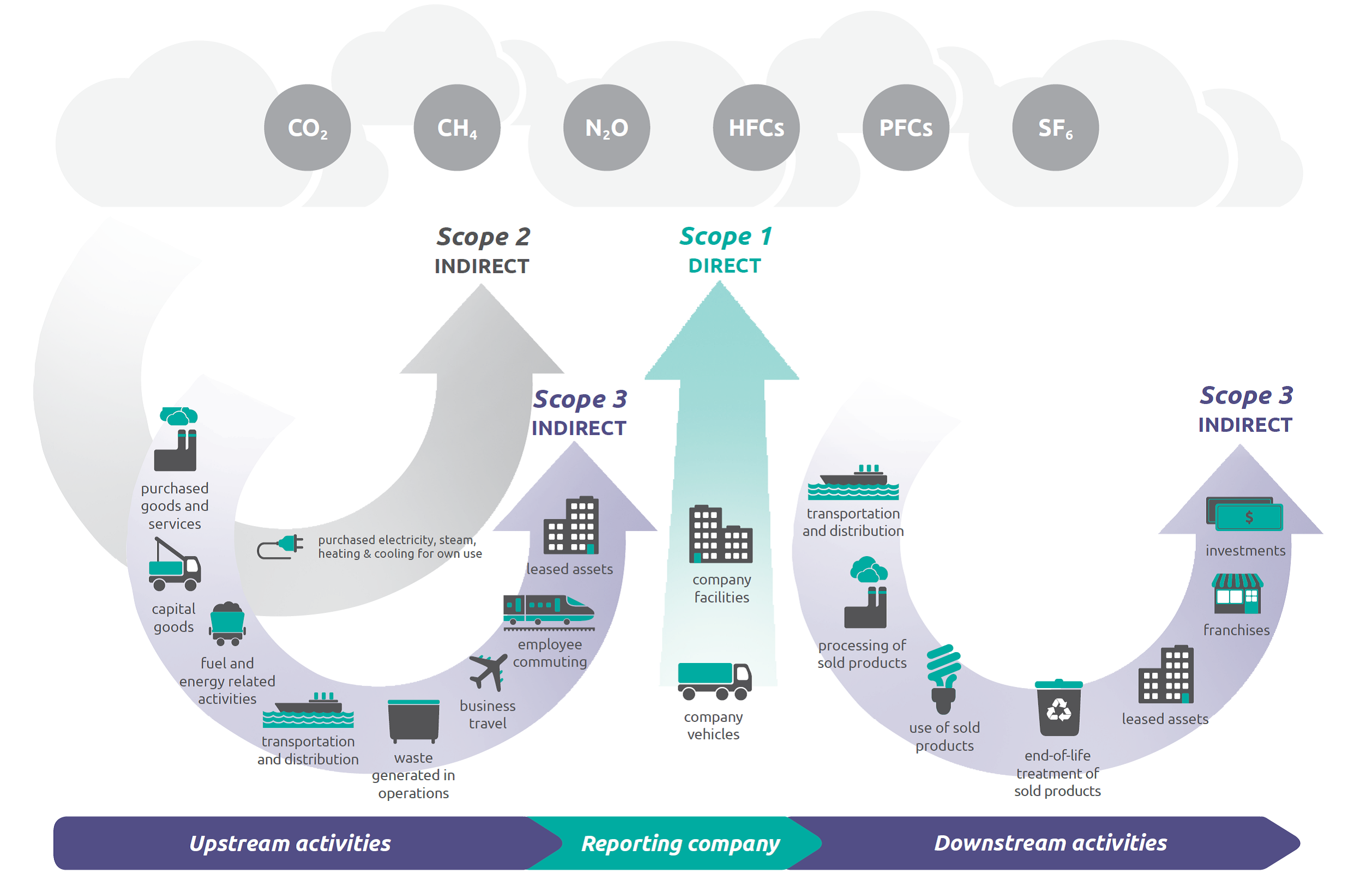Techspert, the AI technology innovator connecting businesses with experts for industry insights,...
Markets and businesses around the world are undergoing fundamental and rapid change to become net-zero. Find out how to decarbonize your business with practical tips.

In response to climate change, companies across the world, from SMEs to global corporations, are increasingly setting goals to reduce carbon emissions as they forge down the path toward a more sustainable future and greener economy. With regulations such as the European Green Deal, the US’s CLEAN Future Act, the UK’s sixth Carbon Budget, and New Zealand’s Zero Carbon Act, governments around the world are providing incentives for decarbonization. And companies are stepping up, developing strategies for decarbonization, and making commitments such as becoming net-zero by 2050, some sooner than that.
As with any strategy, there’s no one-size-fits-all and to achieve your business’ decarbonization goals, you need to develop a strategy that works for you.
Before we dive into some practical tips on how to decarbonize your business, let’s have a look at some key definitions.
Emissions omission: Understanding key terms
There are so many climate terms and buzzwords being used which can make it difficult to understand climate targets and their effectiveness. Although there are more, we highlight four for the purpose of this discussion.
Carbon neutral: Any CO2 released into the atmosphere from a company’s activities is balanced by an equivalent amount being removed (Plan A, June 2021).
Net-zero emissions: A state in which the activities within the value chain of a company result in no net impact on the climate from greenhouse gas (GHG) emissions. Note, we’re referring to this definition when we use net-zero (Microsoft and PWC, 2020).
Net-Zero carbon emissions: An activity releases net-zero carbon emissions into the atmosphere (Plan A, June 2021).
Decarbonization: The reduction and/or elimination of GHG emissions (Microsoft and PWC, 2020).
Now that we’ve cleared the air on some key climate terms, let’s dig into some practical tips on how to achieve corporate decarbonization.
Work out your carbon footprint
Before you can start moving toward decarbonization, you need to understand your company’s total emissions impact across the value chain and identify the largest emissions sources. Without this information, the targets and goals you develop are meaningless as you can’t assess if they’re attainable, ambitious or track progress toward them.
You can calculate the total emissions footprint of your business by conducting a value chain baseline assessment using a carbon accounting methodology, such as the GHG Protocol Corporate Accounting and Reporting Standard, to develop a GHG inventory.
Your GHG emissions inventory should incorporate Scope 1, Scope 2, and Scope 3 emissions. Scope 1 includes direct emissions from sources that are controlled or owned by your business (e.g., company vehicles and heating sources). Scope 2 emissions are indirect emissions from the generation of purchased energy consumed by your company (e.g., electricity, steam, heating, and cooling). Separated into 15 categories, Scope 3 emissions are indirect emissions that occur in your company’s value chain and often represent the bulk of your total GHG emissions (e.g., waste disposal, purchased goods and services).
Once you’ve collected the data, it’s time to act.

GHG Protocol scopes and emissions across the value chain. Source: WRI/WBCSD Corporate Value Chain (Scope 3) Accounting and Reporting Standard (PDF).
Develop your strategy
As mentioned earlier, no two strategies are the same, so start by clearly defining net-zero and what it means for your business. Armed with your definition, it’s time to get strategizing.
This list isn’t exhaustive, but it includes a few factors to bear in mind when creating your strategy.
Integration: Delivering on your net-zero commitments will require an end-to-end business transformation. Your net-zero strategy needs to be embedded into your company strategy and across all business functions to maximize value and build resilience in a changing climate.
You also need to ensure that your net-zero KPIs are aligned with, and support business success and business KPIs.
Targets: Your net-zero targets should be science-based and align with the Paris Agreement – which seeks to limit global warming to 2° Celsius above pre-industrial levels and pursue efforts to limit warming to 1.5°.
Focusing only on the long-term goals can be overwhelming so start by setting short-term targets that are achievable. For example, establish what emissions reductions will be required each year to reach your ultimate goal. Having interim targets will enable you to keep track of your progress and redirect your business if it goes off-course.
Timelines: Develop a roadmap with clear, time-bound and costed delivery plans for each key step in reaching net-zero. Your timings should demonstrate tangible near-term ambitions and interim goals. Over 3,000 companies globally are aiming to achieve net-zero by 2050 in alignment with the United Nations Climate Change Race To Zero campaign.
Finance: Going net-zero requires a considerable commitment and willingness to finance. Funding needs to be allocated for skills, innovation, and R&D to name a few. To achieve your goals, you need to identify and prioritize sources for financing your net-zero efforts and ensure that net-zero is embedded into your corporate finance decision-making.
Leadership: You need to establish a cross-functional working group responsible for implementing your strategy and achieving your targets. To ensure accountability, the responsibility of delivery needs to lie with those at the highest level of your business.
Transparency: Shout about your net-zero targets, your journey and share your progress publicly across various channels. Making your strategy and roadmap public is an effective way to hold yourself accountable, track progress, and demonstrate credibility to key stakeholders including investors, employees, and customers.
Using common frameworks, such as the Task Force for Climate-related Financial Disclosure (TCFD), enables stakeholders to transparently see your annual progress and allows you to communicate your climate journey following a level of standardization with enough room to tailor the narrative to your business.
Now that we’ve got an idea of where to start on developing your strategy, let’s move on to some practical decarbonization tips.
Decarbonization “quick” wins
The race to zero is going to be challenging and some changes are going to be more difficult to implement than others. But there’s no shame in starting with some quick wins to move you closer toward net-zero.
Here are 10 changes for your business to consider making.
- Support local: Procuring materials from suppliers who are geographically closer and produce goods/offer services in a sustainable way could make a major difference to your carbon footprint. It’s also a terrific way to build relationships with local businesses and can help you improve supply chain efficiency.
- Renewable energy: Electricity generation and use is one of the largest sources of GHG emissions. Switching to genuine 100% renewable energy is a simple way to have a massive, positive impact.
- Green cloud optimization: Move to web and cloud hosts that use 100% renewable electricity. Managing and processing data on a local server also greatly increases carbon emissions in comparison to servers hosted externally – data centers have become some of the biggest energy consumers.
- Insulation alternatives: Finding green ways to insulate your building is an effective way to save energy on heating or cooling. For instance, grass rooftops, glasswool (also known as fiberglass), cellulose fiber and cotton.
- Construction: The cement industry is responsible for approximately a quarter of all industry CO2 emissions, and it also generates the most CO2 emissions per dollar of revenue. In construction, where possible, partially substitute cement clinker for alternative materials such as fly ash, limestone, or slag.
- Combat commute carbon: Develop a company travel policy to minimize your transport carbon footprint. This could include encouraging video conferencing, having a cycle to work scheme, endorsing remote working, and if you need to fly, making a choice between airlines based on fuel and fleet efficiency.
- Energy-efficient machines: Replace old, energy-draining machines and appliances (printers, computers, refrigerators, assembly line machines, etc.) with newer and greener options. This will improve company sustainability and the updated technology will increase the efficiency of the machines.
- Environmentally friendly lighting: If natural lighting isn’t an option, switching from incandescent bulbs to LEDs is one of the easiest ways to reduce your business’ carbon footprint. LEDs use up to 90% less energy than incandescent light bulbs and last up to 25 times longer.
- Minimize emissions from food and food waste: Food requires a great amount of energy to produce and transport. So, food waste can be a high source of carbon. Ensure that company food is sourced locally and sustainably, introduce food waste recycling and offer vegan and vegetarian options (16.5% of emissions are from livestock agriculture).
- The Three Rs: It’s a classic but you can’t go wrong with the Three Rs – reduce, reuse, recycle. We've already covered a few ways of reducing your business’ carbon footprint so let’s look at the other two Rs. Invest in reusable materials, ditch disposable products, and use refillable supplies. Lastly, your business can recycle items such as paper, plastic, glass, metal, batteries, and electronics.
To round things off, we share some benefits of decarbonizing your business.
The business benefits of decarbonization
In addition to combating climate change and contributing towards a more sustainable future, decarbonization has other benefits for your business.
- Cost savings: Using less energy to run your business means you’ll pay less to run your business. And if you reduce energy requirements you mitigate future cost increases now. A win for the environment and a win for your pocket!
- Improved efficiency: Reducing carbon emissions often results in greater efficiency as businesses seek alternatives to optimize processes, reduce raw material inputs and lower energy consumption.
- Talent attraction and retention: Employees are increasingly looking to work at companies that are environmentally friendly. According to a global survey from the IBM Institute for Business Value, 71% of employees and employment seekers say that environmentally sustainable companies are more attractive employers and nearly half would accept a lower salary to work for an environmentally and socially responsible company.
- Access to capital: Investors and financial institutions are requiring more disclosure on sustainability reporting and are assessing carbon risks in portfolios. An analysis of interviews with 70 executives in 43 global institutional investing firms suggests that environmental, social, and governance (ESG) is a priority for these leaders and that corporations will soon be held accountable by shareholders for their ESG performance.
- Sustainability sells: Pollution is bad for the planet, your brand and reputation. Many customers and consumers are making purchasing decisions based on a company’s climate impact.
Whether it’s switching to clean energy or developing a robust net-zero strategic plan with targets and timelines in place, the most important step to decarbonizing your business is to start.
Need insights on decarbonization? Get in touch and we’ll connect you with the right experts!





